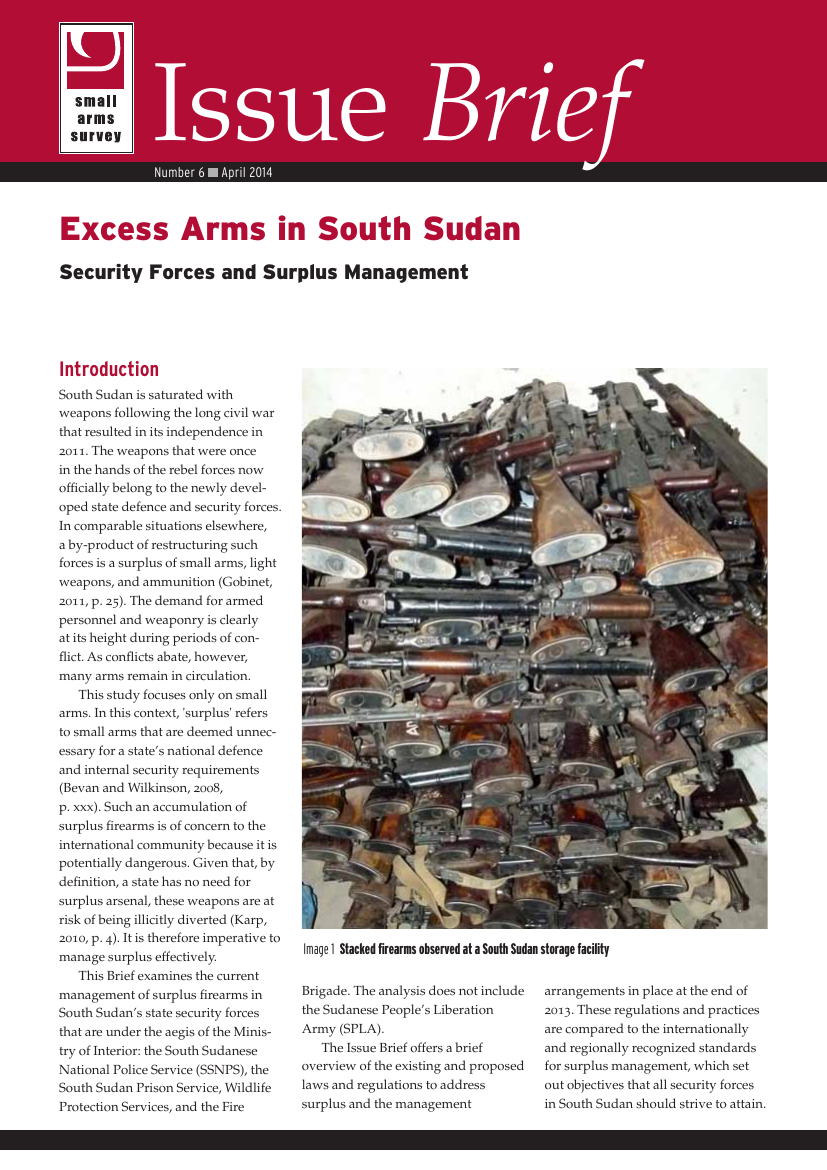
Excess Arms in South Sudan: Security Forces and Surplus Management (Issue Brief 6)
South Sudan is saturated with weapons following the long civil war prior to its independence in 2011. The weapons that were once in the hands of the rebel forces now officially belong to the newly developed state defence and security forces. In comparable situations elsewhere, a by-product of restructuring such forces is a surplus of small arms, light weapons, and ammunition. The demand for armed personnel and weaponry is clearly at its height during periods of conflict. As conflicts abate, however, many arms remain in circulation.
Such an accumulation of surplus firearms is of concern to the international community because it is potentially dangerous: by definition, a state has no need for surplus stockpiles, these weapons are at risk of being illicitly diverted. It is therefore imperative to manage surplus effectively.
A new Small Arms Survey Issue Brief, Excess Arms in South Sudan: Security Forces and Surplus Management, provides an overview of laws and regulations to address surplus and the management arrangements in place at the end of 2013. The research was completed before hostilities broke out in mid-December 2013, and therefore the findings do not directly address the ramifications of that violence.
Excess Arms in South Sudan finds that:
- South Sudan currently has no surplus management policy. Although new legislation addresses many of the issues, it does not constitute a comprehensive national policy.
- Security forces are undergoing significant structural changes that will affect the level of surplus.
- Inventory management is generally weak, with no national records of stockpiles, and no regular inventory audits.
- Despite the lack of formal policy guidelines, security forces do identify obsolete and unnecessary weapons, using consistent selection criteria: this could be viewed as a first step in identifying surplus and serviceability.
- South Sudan has not systematically destroyed surplus or non-serviceable firearms since obtaining independence in 2011.
This research was conducted with support from Germany’s Federal Foreign Office.
Have your say about Small Arms Survey publications and products: take 5 minutes to fill out our questionnaire.